
Ballet audiences know how the story goes. The prince meets his princess and they either live happily ever after or are plunged into despair when love goes awry. All very beautiful, and all very expected. But when the Australian Ballet unleashes its latest work this month – about the witty, openly gay writer Oscar Wilde – audiences will see something far less predictable.
For the company’s artistic director, David Hallberg – who performed the prince who meets his princess countless times during his dancing career – it’s a proud moment.
“Ballet has always told heteronormative stories,” he says. “I’m proud that we’re boldly telling a story that actually isn’t told so often, and maybe ballet has actually been scared to tell. When I think about it, I think embarrassingly, ballet as an art form hasn’t had the courage to tell a story like this.”
For the man commissioned by Hallberg to create Oscar – acclaimed British choreographer Christopher Wheeldon – such a move was long overdue.
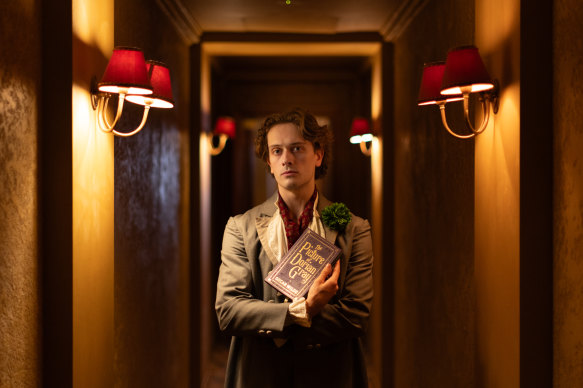
Callum Linnane, photographed at the Regent Theatre, stars in Oscar for The Australian Ballet.Credit: Jason South
“I’ve wanted to do a real ballet that represents queer culture, just because it doesn’t – in a major storytelling way, anyway – really exist,” he says during a break in rehearsals at the company’s Melbourne headquarters.
“There have, of course, been ballets with suggestions of and underlying themes. For example, there’s a moment in Woolf Works, with Virginia Woolf in Wayne [McGregor’s] wonderful piece that he made for the Royal Ballet – in [the act inspired by] Mrs. Dalloway, two women kiss but in a much more abstract, non-linear way. For me, as a gay man, I just thought it’s time we had a big, gay, full-length-story ballet.”
Oscar is a huge leap from the fairytale scenarios of the world’s most popular ballets – think Swan Lake, Sleeping Beauty, The Nutcracker and Cinderella – in which boys and girls take their traditional places.
Hallberg wanted a new narrative for Oscar, his first full-length commission for the company.
When he first spoke to Wheeldon about creating a work for the Australian Ballet, it didn’t take long for them to land on the brilliant, charming, hilarious, occasionally caustic Irish-born author. The pair had known each other for more than 20 years, Hallberg says, but this was new territory.
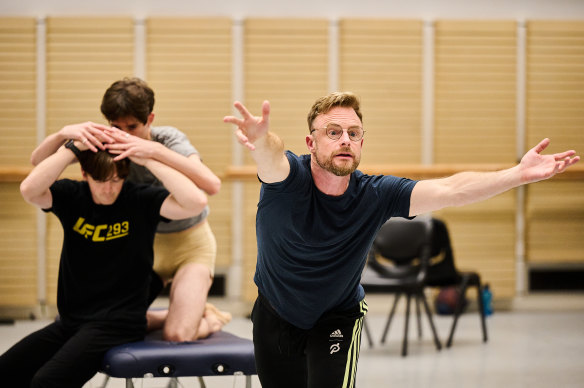
Choreographer Christopher Wheeldon during rehearsals with dancers Joseph Caley and Adam Elmes.Credit: Christopher Rodgers-Wilson
Unlike other art forms, such as film and visual art, this is a story that isn’t normally told in classical ballet, Hallberg says.
“Moonlight was a fabulous film about repressed homosexuality,” he says, also mentioning Call Me by Your Name and Ang Lee’s Brokeback Mountain. “Those are genres that have done better about telling or addressing modern topics, whether that be sexuality, whether that be political, whether that be racism, but ballet has always been a very … ” His voice trails off. “It’s a classical art form.”
Making a ballet about Wilde is inspired and audacious, but given his brilliance with words, how viable was the idea? Could dance possibly do justice to the great writer? If anyone can devise a show that works, it’s Wheeldon. Having trained at Britain’s Royal Ballet School, he danced there before heading to the US to join the New York City Ballet, becoming its first resident choreographer.
Since the end of his dancing career he has carved out a niche as a major choreographer, notably for MJ The Musical, loosely based on Michael Jackson’s life (and heading to Sydney next year) and the one-act ballet An American in Paris, for which he won four Tonys. His acclaimed 2011 ballet Alice’s Adventures in Wonderland returned to Melbourne earlier this year. He also continues in his role as artistic director of the Royal Ballet.
During rehearsals for the final scene, Wheeldon is hands-on, illustrating what he wants to see by creating the poses. Six dancers practice their respective moves, while others sit and or stand around the edges, taking in the choreographer’s commentary.
“I hadn’t sort of finished all the material in the second act leading up to that moment, but I needed to know that my idea for the ending could work, which is why I jumped to it. Sometimes it’s good to know you’ve got your beginning, your middle and your end, and then the rest can kind of fill in,” he says.
It’s all evidence of Wheeldon’s skill as a storyteller.
“The amazing thing about Chris Wheeldon is that he’s a seasoned storyteller and choreographer,” says Hallberg. “He has the ability to tell a story with quality and with a subject that could maybe be a little uneasy for audiences. There won’t be any denying, in my opinion, the fact that he can tell a quality story of something that might be a little bit of a – quote unquote – risk.
“He’s not afraid of entertaining: he will entertain the audience through movement, through the choreography, through the beauty of his patterns and the set design.”
Wheeldon, 51, remembers his grandfather having a book of Oscar Wilde’s fairytales, which they loved to read together. The Happy Prince and The Selfish Giant are often referred to as the standouts, but for Wheeldon, it is The Nightingale and the Rose. He once created a one-act version of the story for the New York City Ballet, but it disappeared from the repertoire.
When Hallberg asked Wheeldon what he wanted to do for the Australian Ballet, his mind returned to his childhood favourite. “It has always really stuck with me. Just the sacrifice and tragedy and beauty and loving nature of the nightingale, it’s just always been so appealing. It’s such a dramatic tale, somebody who is willing to actually die for someone else’s love.”
In the ballet, the writer’s life story is interwoven with this overlooked fairytale. Female dancers become the nightingale, their movements remarkably bird-like, as key moments in Wilde’s life are brought to life. During rehearsals, there’s an aching tenderness between the men playing the great writer and the women who seem to morph into the loving bird. It’s already poignant and powerful, even without the addition of costume and set.
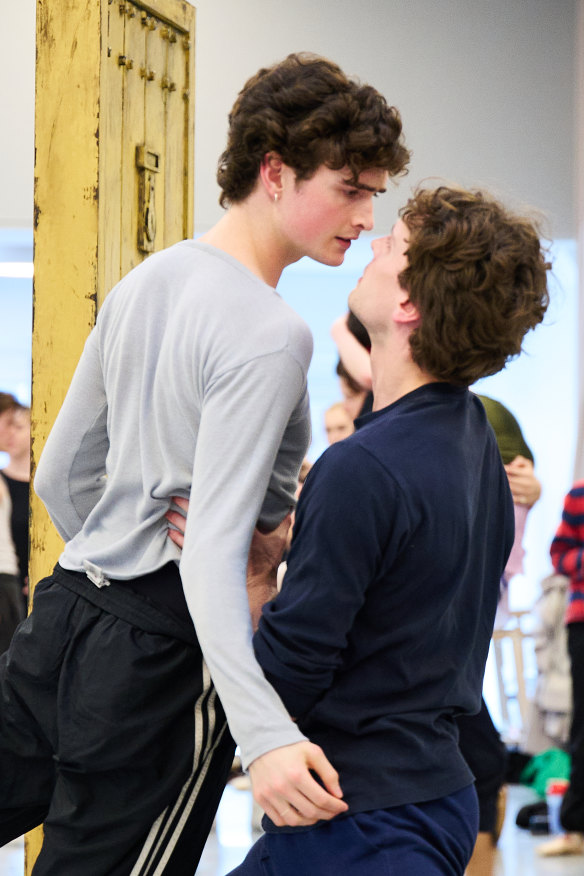
Benjamin Garrett and Callum Linnane during rehearsals. Credit: Christopher Rodgers-Wilson
Fevered dream sequences and characters from some of the author’s best-known works – notably The Picture of Dorian Gray – are interspersed through the show; just two voiceovers feature, one early in the first act and the other at the end.
According to Wheeldon, this is not about biographical ballet. It’s a collage of Wilde’s life and moments, of his relationships with men, his wife and his family. “It’s exploring elements of his life, combined with the parallels of Oscar’s personality, his ideals and his relationships that he wrote into his stories, because he wrote himself into everything, and that was also something I was excited to explore.”
Oscar is the company’s first work to be staged at the Regent Theatre, while its traditional home, the State Theatre at Arts Centre Melbourne, is renovated. The more intimate setting brings its staging challenges, but also provides a fittingly lush backdrop for this tale of forbidden love. Sharing the role of Oscar will be Joseph Caley, Callum Linnane and Jarryd Madden, while the nightingale will be danced by Jill Ogai, Ako Kondo and Benedicte Bemet. Music is composed by Joby Talbot, and set and costume design is by Jean-Marc Puissant; the score will be played by Orchestra Victoria in Melbourne.
Wheeldon recalls seeing Wilde, the 1997 film starring Stephen Fry in the title role, based on Richard Ellmann’s 1987 biography. “It introduced me to a whole lot of the history of Oscar and his relationships with his family and, of course, the trial. And I just got really fascinated in him as a personality.”
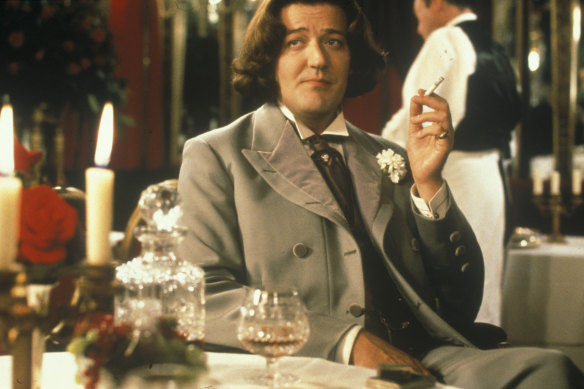
Stephen Fry as Oscar Wilde in the 1997 film Wilde.
Wilde, whose lover, Lord Alfred Douglas, is also depicted in the ballet, was prosecuted for “gross indecency” and spent two years in jail, from May 25, 1895 to May 18, 1897.
While he was a literary genius, his colourful life lent itself to theatre. “When I’m making commissions like this with Chris, I want to tell stories that resonate with audiences,” says Hallberg. “I think it tells a story that people talk about even today, [not] just a minority population or repressed emotion and feeling.”
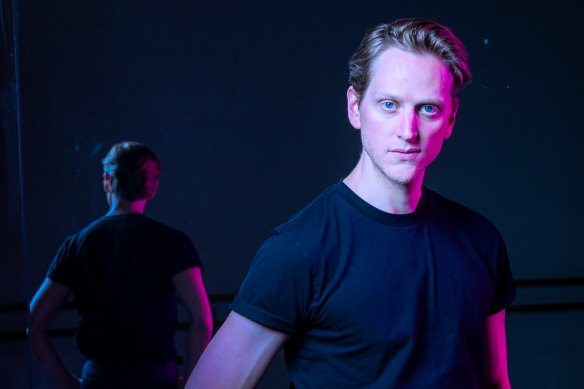
David Hallberg is proud to be telling the story of Oscar Wilde.Credit: Justin McManus
Historical accuracy was an important part of making the show. Timothy Jones, a historian of sexuality and religion at La Trobe University, met with the dancers to provide an overview of what life and sexual norms were like in Wilde’s day.
The notion that the Victorians were repressed might be longstanding, but they were obsessed with sex, mad for it, says Jones. “They might have had a conservative culture, but they were talking about sex all of the time. By saying what you must not do, you’re talking about what people are doing.”
While there were people who were attracted to others of the same sex, there was barely a language for it. The term homosexual was only invented in 1869 – by Hungarian journalist Karl Maria Kurtbeny – but it didn’t come into common usage until the early 20th century.
Loading
People didn’t think of themselves as what we would now describe as gay – you were “a good man” or “a good woman”, explains Jones. “Sexual acts were understood differently to identity: there was a disconnect between what you did with your sex bits and how you understood yourself.”
Same-sex-attracted men of means, like Wilde, gravitated towards the thriving underground scene, meeting like-minded people in “molly houses”, a term used for pubs and other places they could gather – and brothels. Paying for sex at the time was common.
In a famous speech during one of his trials, Wilde coined the idea of “the love that dare not speak its name”, and explained himself in relation to the love between Jonathan and David described in the bible, classical Greek love between men, and European Renaissance poetry.
Wilde is treated like an icon and martyr today, but it took a long time for the writer’s reputation to be rehabilitated, according to Jones. The scandal of the trials had a powerful impact on his legacy.
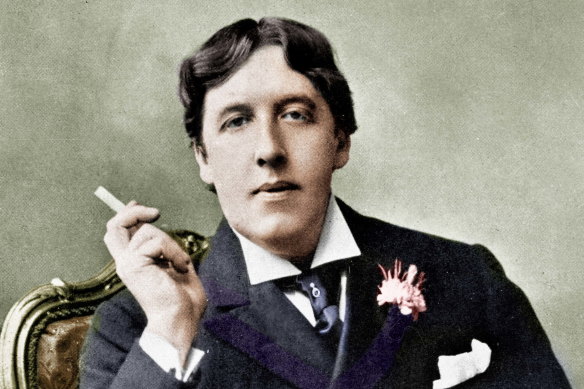
Oscar Wilde has inspired the Australian Ballet’s latest production.Credit: Roger Viollet via Getty Images
It wasn’t until the 1950s and ’60s when the gay rights movement galvanised that people began to celebrate Wilde. Sex between men wasn’t decriminalised in the UK until 1967. He was granted a posthumous pardon in 2017.
Now, Wilde’s star shines brightly. His works have been having an extended moment for several years in Australia, including in Kip Williams’ celebrated play The Picture of Dorian Gray .
For gay communities the world over, he is important for many reasons. “Most queer people grow up in a family that isn’t a queer family,” Jones says. “He’s really valuable as someone you can see in the past.”
For someone who died at 46, Wilde achieved an awful lot. A polymath, he wrote essays, plays and stories, and his breakthrough came with The Importance of Being Earnest in 1895. He is one of the most prominent figures in dandyism, an aesthetic movement characterised by a love of beauty.
In 1884, Wilde married Constance Lloyd and within a few years, the couple had two boys. It was only in his early 40s that Wilde started having affairs with men, Jones says, by which time he was a famous literary and cultural figure.
Does Wheeldonthink audiences are ready for this ballet?
Loading
“I care and don’t care in equal measures. Of course, I don’t want to offend anyone, but this is now the life we’re living. We’re a much more accepting culture, thankfully, [though] not accepting enough – it takes leaders in the arts, or leaders just in general, to be reinforcing this incredible cultural shift that we’re experiencing through their work. Heterosexual, heteronormative relationships have been accepted for years.
“As someone who very much believes that you are born as you are – and I’ve lived the life of a gay man and have fought and struggled to get to this place in culture – I think it’s our responsibility as artists to be bringing even our classical art forms forwards into the 21st century, and, even if it’s confronting, to embrace this as a normal way of life.”
Hallberg and Wheeldon believe Oscar adds a significant new chapter to the history of ballet.
“Of course, I hope the work is embraced by audiences,” says Hallberg. “I hope the work can last years and years, but I think the legacy for me is to bring in someone like Chris – of the calibre he is – to the Australian Ballet. I honestly don’t think about legacy very often, but what’s important to me is that Australian audiences [and] Australian dancers are given the opportunity to witness art and commissions.
“I’m looking through the lens of the artistic director of the Australian Ballet, [thinking] where do I want this company to go, how do we want to move forward and not stay in the same place. We are creating this piece of art, not just buying it from a company around the world.
“Someone said to me recently, ‘it’s a shame that dance is a silent art form because Wilde had the quippiest one-liners, how do you interpret that?’ And I actually have total faith that Chris – although we’re not speaking the words for the most part – can embody through his choreography the kind of wit that Oscar Wilde was so famous for.”
Oscar is at Melbourne’s Regent Theatre from September 13 to 24 and the Sydney Opera House from November 8-23.



























